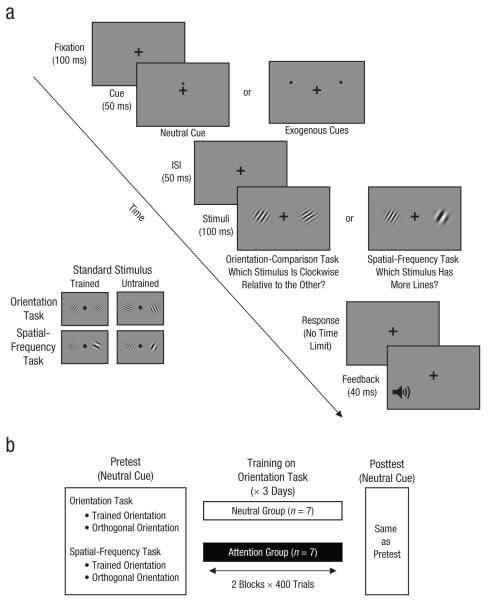Fig. 1.
Trial sequence and protocol for training and testing. Each trial began with a screen showing a fixation cross (a), followed by either the neutral cue at the center of the screen or two exogenous cues above the locations of the upcoming stimuli. After the cues, there was a brief interstimulus interval (ISI). In the orientation-comparison task, observers had to determine which of the two stimuli was rotated clockwise relative to the other; in the example shown here, the stimulus on the right is rotated clockwise relative to the other. In the spatial-frequency task, observers had to determine which of the two stimuli had more lines; in the example shown here, the stimulus on the left has more lines. Standard stimuli were oriented either at 30° (trained) or at 300° (orthogonal or untrained) relative to vertical. The protocol (b) consisted of a pretest, 3 days of training, and a posttest. Participants were tested on both tasks, with both the trained and the orthogonal (untrained) standard stimuli; the neutral cue was used in all test trials. Participants were trained on the orientation-comparison task only. The neutral group trained with the neutral cue, and the attention group trained with the exogenous cues.

